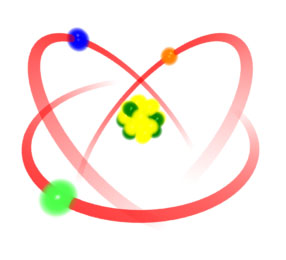
|
|---|
|
STAFF: |
Mr. C. Oh
Department Head |
| |
|
|
|
|
|
|
|
|
|
|
|
|
|
|
|
|
|
The Place of Science in the Curriculum
During the twentieth century, science has come to play an increasingly important role in the lives of all Canadians. It underpins many of the technologies that we now take for granted, from life-saving pharmaceuticals to computers and other information technologies. There is every reason to expect that science and its impact on our lives will continue to grow as we enter the twenty-first century. Consequently, scientific literacy for all has become the goal of science education throughout the world, and has been given expression in Canada in the Common Framework of Science Learning Outcomes, K to 12: Pan-Canadian Protocol for Collaboration on School Curriculum (Council of Ministers of Education, Canada, 1997). Scientific literacy can be defined as possession of the scientific knowledge, skills, and habits of mind required to thrive in the science-based world of the twenty-first century.
Achieving excellence in scientific literacy is not the same as becoming a science specialist. The notion of thriving in a science-based world applies as much to a small-business person, a lawyer, an elementary school teacher, or an office worker as it does to a doctor, an engineer, or a research scientist. While the specific knowledge and skills required for each of these occupations vary, the basic goal of thriving in a science-based world remains the same. Achievement of both excellence and equity underlies the goals of the new science program at the secondary level. Accordingly, science courses have been designed for a wide variety of students, taking into account their interests and possible postsecondary destinations. Some courses have been designed to serve as preparation for specialist studies in science-related fields; others have been designed for students intending to go on to postsecondary education but not to study science; yet others have been designed with the needs of the workplace in mind. The overall intention is that all graduates of Ontario secondary schools will achieve excellence and a high degree of scientific literacy while maintaining a sense of wonder about the world around them. Accordingly, the curriculum reflects new developments on the international science scene and is intended to position science education in Ontario at the forefront of science education around the world.
Science has significant, though varied, connections with many other disciplines. Science is related in many ways to the economies of all developed nations, including Canada, and plays a major role in public and private decisions in many areas of society. It is critical, for example, to decisions and developments relating to sustainable development. Thus, science cannot be taught in isolation, but must be linked to other disciplines. Clearly, many topics studied in mathematics and technological education overlap with topics covered in science. Similar links exist with geography and other areas of social studies. Communication is, of course, extremely important in science, as it is in all disciplines – both in terms of reading and writing, and in the use of information technology for collecting, organizing, and expressing information. The newer aspects of the science curriculum – especially those that focus on science, technology, society, and the environment (STSE) – call for students to deal with the impacts of science on society, and this requirement brings in issues that relate to human values. Science can therefore not be viewed as merely a matter of “facts”; rather, it is a subject in which students learn to weigh the complex combinations of fact and value that developments in science and technology have given rise to in modern society.
Subject matter from any course in science can be combined with subject matter from one or more courses in other disciplines to create an interdisciplinary course. The policies and procedures regarding the development of interdisciplinary courses are outlined in the interdisciplinary studies curriculum policy document.
The secondary curriculum in science builds on three basic goals that run through every grade and strand of the elementary curriculum and that reflect the essential triad of knowledge, skills, and the ability to relate science to technology, society, and the environment (STSE). In the secondary program, these goals vary somewhat according to the type of course (academic or applied), but they are always present in some form and serve to unify the program (see below). Science is approached in all courses not only as an intellectual pursuit but also as an activity-based enterprise operating within a social context.
The content of the secondary science program also builds on the five strands present in the elementary curriculum, although less emphasis is placed on technological education, which is a distinct discipline at the secondary level. In particular, the transition from Grade 8 to Grade 9 is a smooth one because of the close alignment of both the elementary and the secondary program with the pan-Canadian Common Framework of Science Learning Outcomes.
Taken from the Ontario Ministry of Education Curriculum 9 - 12
|